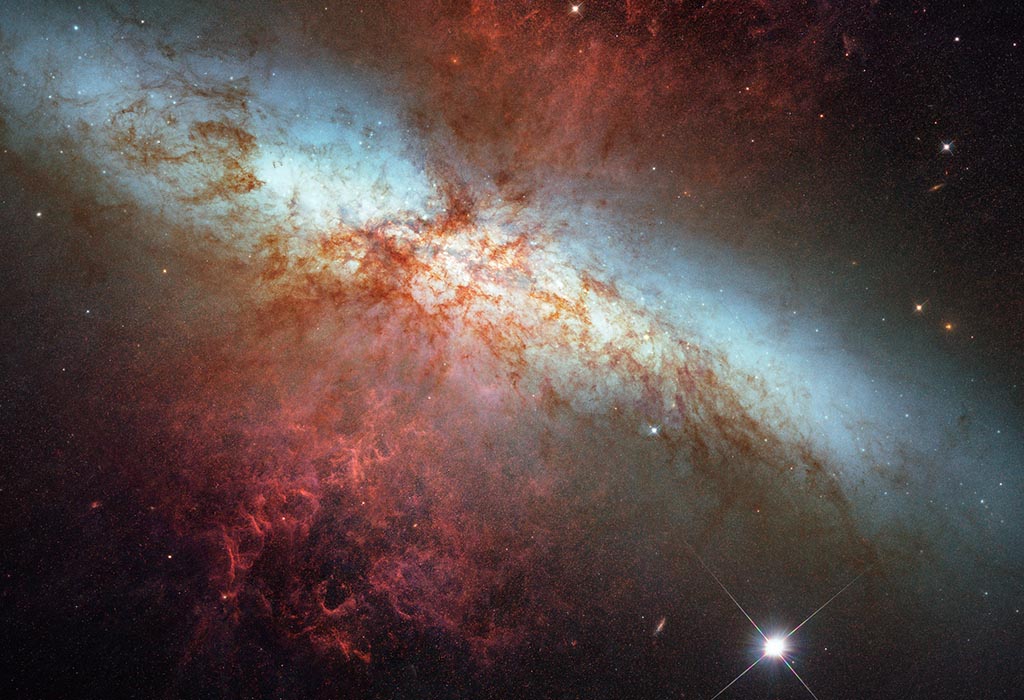Shedding light on dark energy
The atoms that make up our reality, everything we know of—the rocks, plants, planets—account for less than 5 per cent of the known universe. The other 95 per cent? Well, it’s dark. Around a quarter of the universe is made from stuff known as dark matter, and the other 70 per cent or so is dark energy.
The expanding universe
In the 1920s, astronomer Edwin Hubble (and others!) studied the redshift of galaxies and determined that the universe was expanding, and came up with the Hubble ‘constant’—the rate of the universe’s expansion. But now we have evidence that this ‘constant’ is not so constant after all.
In the late 1990s, two teams, one led by Australian astronomer Brian Schmidt, the other by American Saul Perlmutter, each measured the brightness and redshift of many (52 in total between the two teams) distant examples of a certain type of exploding star (type Ia supernovae). Both teams came to the same result: rather than gravity exerting its pull and reigning in the expansion of the universe, it was in fact expanding at an accelerating rate. Their findings earned them, along with Adam Riess, the 2011 Nobel Prize in Physics.

Their extraordinary discovery suggests that there is something causing the expansion of the universe to speed up. And this is where dark energy comes in. The theory is that as the universe expands, and ‘normal’ matter and radiation become more dilute, the density of dark energy remains constant—it doesn’t dissipate. So, as space gets bigger, in order for the density of the dark energy to remain the same, more and more of it is created. It serves as the fuel that ‘pushes’ the universe apart.
This starts to sound remarkably similar to an idea that Einstein had in 1917. In order to make his new theory of general relativity work, he assigned a value to the ‘energy density’ of empty space, proposing an unseen influence which counteracted the pull of gravity on all the matter in the universe, so that gravity didn’t cause the universe to eventually collapse in on itself. He called it the ‘cosmological constant’.
In 1917 Einstein didn't realise the universe was expanding, and he later gave up the concept of the cosmological constant as a bad idea once Hubble's discovery of the expansion of the universe was made public 12 years later. However, if we accept Einstein’s idea of the energy of empty space (now called ‘vacuum energy’), we can actually calculate how much of it there should be using the laws of quantum mechanics. The answer turns out to be ridiculously wrong—around 10120 times the observed amount. Obviously, we’re still missing something.
One other piece in this puzzle comes from the shape, or geometry, of the universe. Another of Einstein’s observations is that the shape of the universe depends on its density. Cosmologists have been able to measure the ‘flatness’ of the universe by examining fluctuations in a type of radiation known as the cosmic microwave background, but the total amount of matter (both ‘normal’ and dark) doesn’t provide enough density to match their observations. The rest must come from somewhere, and it just so happens that the amount of dark energy required to explain the acceleration of the expansion of the universe is also the right amount to also provide the observed flatness of space.





